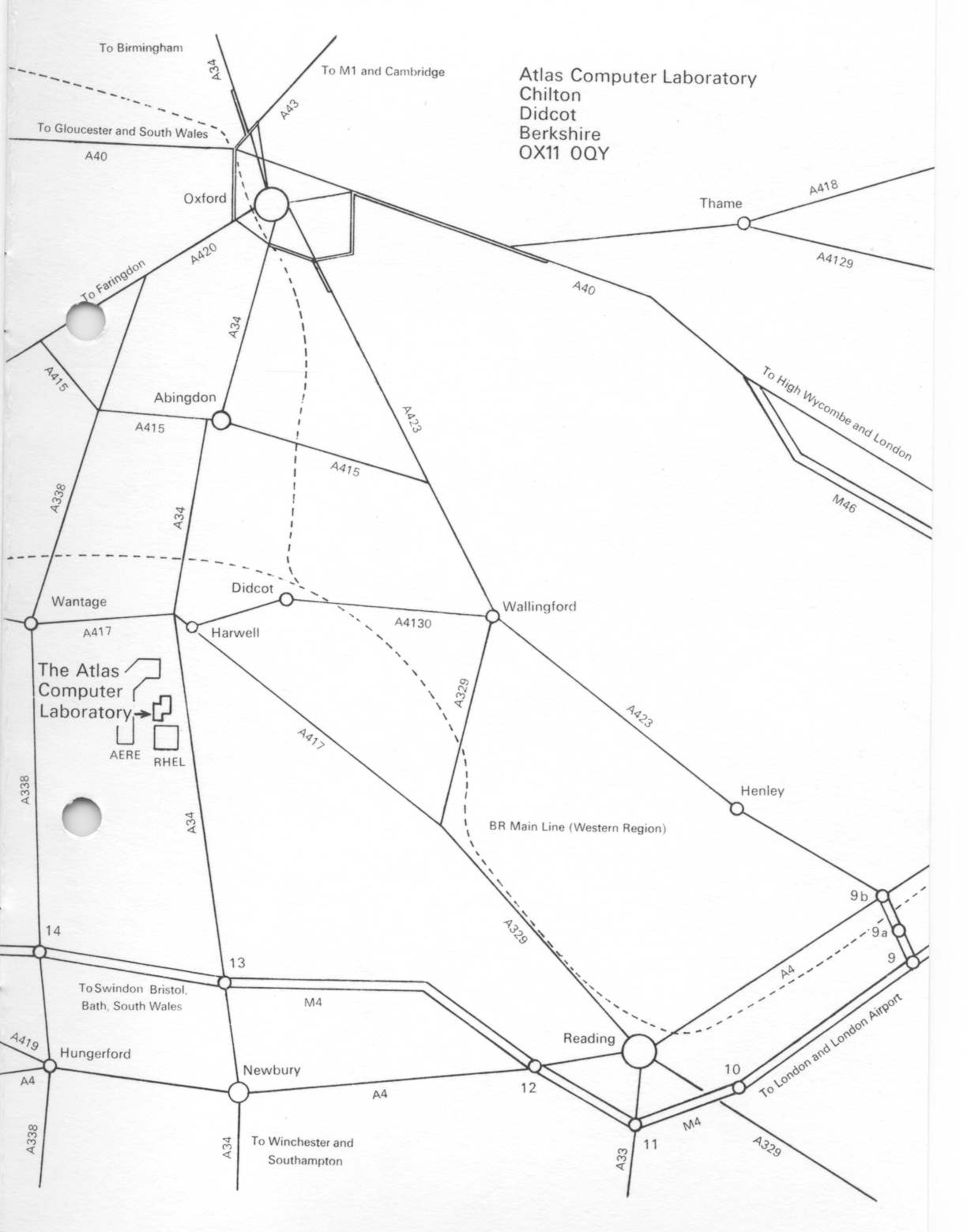

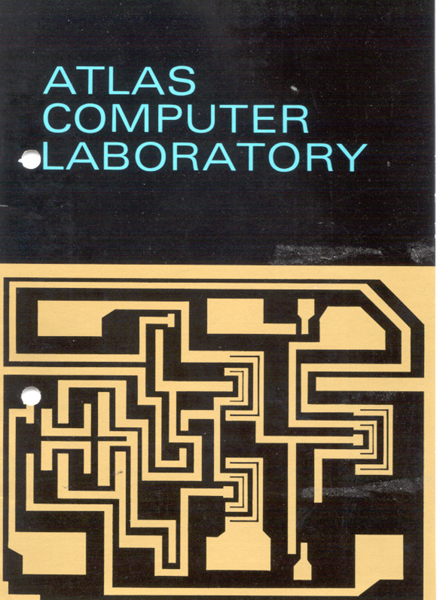
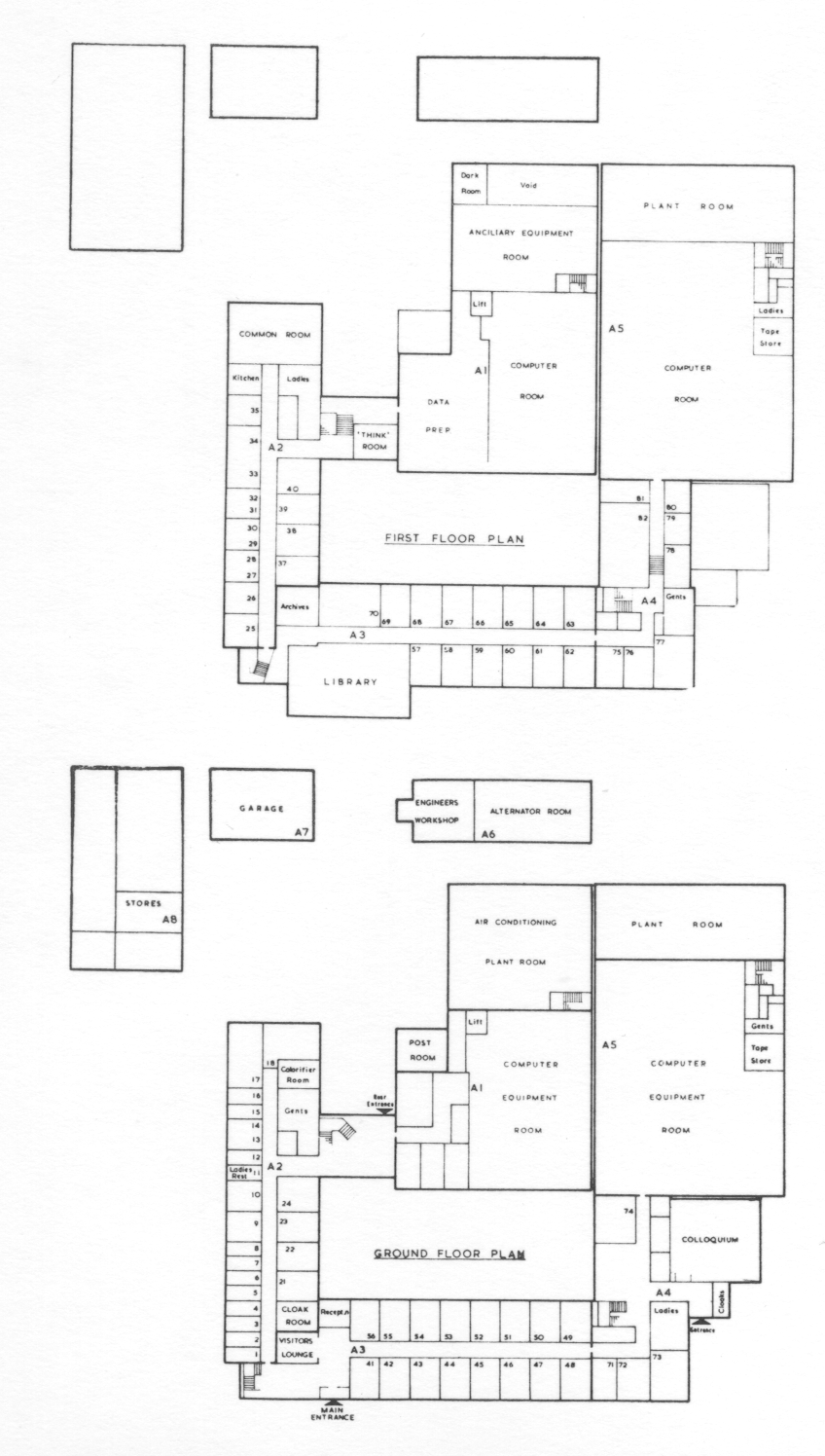
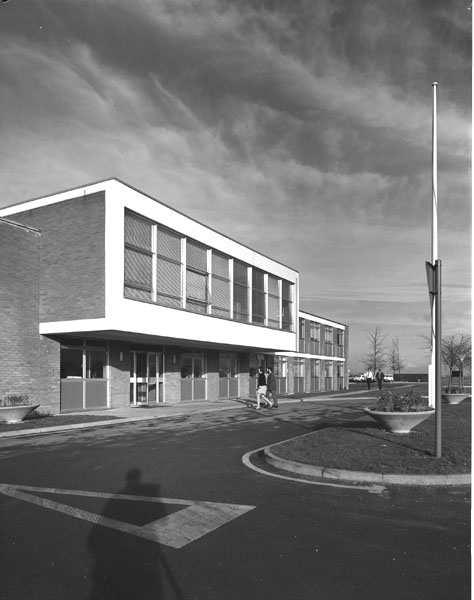
The Atlas Computer Laboratory is one of the scientific institutes of the Science Research Council. The Council itself is one of five set up by Royal Charters. All are financed wholly from public funds and accountable to Parliament through the Secretary of State for Education and Science. The prime aims of the SRC are the support and stimulation of scientific research and the maintenance of standards of scientific research in British universities. It discharges these responsibilities by providing funds to support specific research projects in the universities and by operating laboratories of its own, each with its own research programme and with advanced equipment and services which are made available to university research workers. The total amount of money spent by the Council in the 1972-73 Financial Year was £60M.
The Atlas Laboratory is a specialised professional institute which provides advanced computing services to research workers; its users are mainly in universities and other Research Councils, but its services are available also to Government and other Treasury-supported bodies. The Laboratory is concerned with the development of computational techniques and their application over the whole field of science. It is called "Atlas" because it was set up originally around a classic machine, the Ferranti-ICL Atlas computer.
History. The decision was taken in 1961 to buy a large Atlas computer on which a very broad based computing laboratory could be set up. The responsibility for the project was given to the National Institute for Research in Nuclear Science, a body which the Government had set up in 1958 to support fundamental nuclear physics on a national scale. NIRNS was then planning the building of the Rutherford High Energy Laboratory on the Chilton site, with the 7 GeV proton synchrotron NIMROD oriented wholly towards the academic world and was the most appropriate body to administer the new computing laboratory which also was intended to have a strong academic orientation. In April 1965 the Institute was absorbed into the new Science Research Council, formed under the provisions of the Science and Technology Act (1965).
The process of building, equipping and staffing the Laboratory occupied the years 1962-1964. The computer was ordered from Ferranti Limited and built in their factory at West Gorton, Manchester. The new Atlas building became available in the early part of 1964 and the machine was delivered in May 1964, by which time Ferranti had sold their computer business to ICT - who in turn became ICL in 1967 after the merger with the computer side of English Electric. A regular computing service was opened in October 1964, within a few weeks of what was planned in 1962.
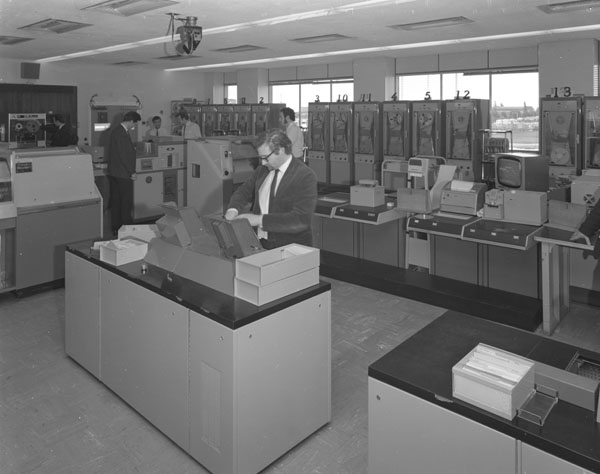
Subsequent events are dealt with in succeeding sections. It soon became clear that the Laboratory was meeting a very real need, and within a very short time of starting up it was giving computational support to research workers in every field of science (including the biological and human sciences as well as the physical) and in every British university. The Laboratory is now considerably bigger than it was in 1964 - in the extent of its buildings, the number of staff, the amount and variety of equipment installed and the amount of computing power available to it. The Atlas computer itself was finally closed down on 30 March 1973, after nearly 9 years of service.
The Atlas Computer. The design of Atlas was one of the many achievements of the distinguished team of computer scientists and engineers at the University of Manchester headed by Dr Tom Kilburn - now Professor Kilburn FRS. It was developed over the period 1957-1961 and was aimed at producing a large-scale computer which had high basic speed (i.e. would do elementary mathematical operations such as add or multiply very quickly) and which had also very powerful, flexible and largely automatic means for organising and controlling the flow of work through it. This function was performed by a large and complex master program which resided in the machine permanently, a design feature that was very advanced in 1960 but which is now standard in virtually all but the smallest computers. The current name for this kind of master program is the Operating System - the Manchester group called this the Supervisor and the Atlas Supervisor was far more comprehensive and ambitious than anything else in existence or being considered commercially at the time. It is probably true to say that Atlas was the first computer to have an operating system in the modern sense of the term. The Atlas design included other novel and advanced features, many of which have now become part of the general body of computer technology. The most important of these, the paged store, has proved to be an idea with far-reaching consequences. Basically it is a means of organising the computer store, with the aid of special hardware registers, so that the operating system can allocate storage to programs and data, and can move these around in the store in a very free and flexible way, to suit the demands being made on the machine at any time. In particular it allows blocks of information (program or data) to be transferred between the fast expensive main store and the cheaper large-capacity backing store, i.e. to devices such as magnetic drums or discs, without any need for the programmer to plan this; the effect is that the programmer can regard the store as a continuous whole, of very large capacity, and need not concern himself with its actual division say into core, drums, and discs in the real machine. This concept was called the "one-level store" by Manchester; it is tending now to be described as "virtual store" or "virtual memory".
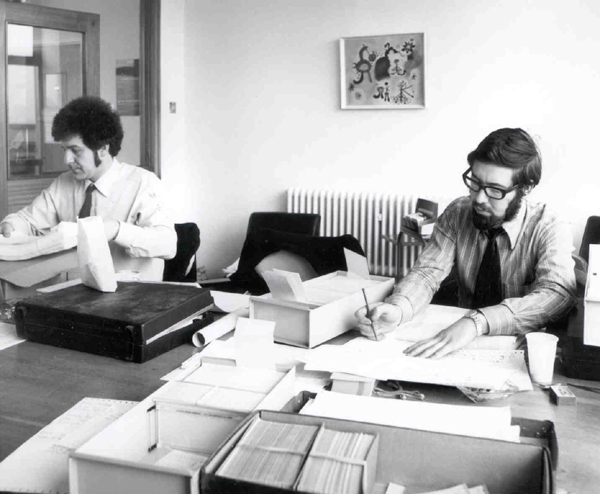
The quality of the Atlas design was demonstrated by the ease with which an important major addition was made to the machine in the Laboratory. The original design made no provision either for magnetic disc storage or for multi-access operation-that is, simultaneous communication between the machine and a number of independent users seated at keyboard-type terminals such as Teletypes or visual display units. At the time the first were not in production and the second was only a very advanced idea. But in the middle 1960's disc stores became standard commercial products, with clear and important parts to play in computer systems, while the problems underlying multi-access working became much better understood. During 1967 a large-capacity disc store was added to Atlas and a very effective multi-access system was provided, in which the terminals communicated with a small subsidiary computer, an RXDS Sigma-2 which passed on data and programs to be executed to Atlas and received back information (e.g. the results of calculations) to be sent to the relevant user terminals. The disc was used as the medium for exchange of information in this process. The Atlas Supervisor was robust and flexible enough to take these considerable changes in its stride. The changes to the Supervisor required to accommodate the disc were made by ICL and the software for the multi-access system was designed and produced in the Laboratory. The number of terminals had grown to 32 and the whole system worked excellently.
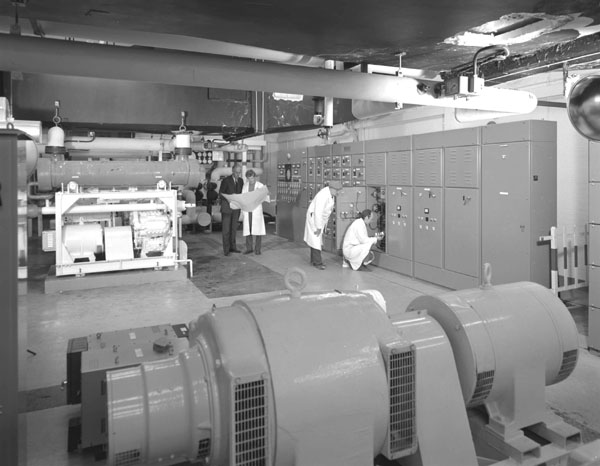
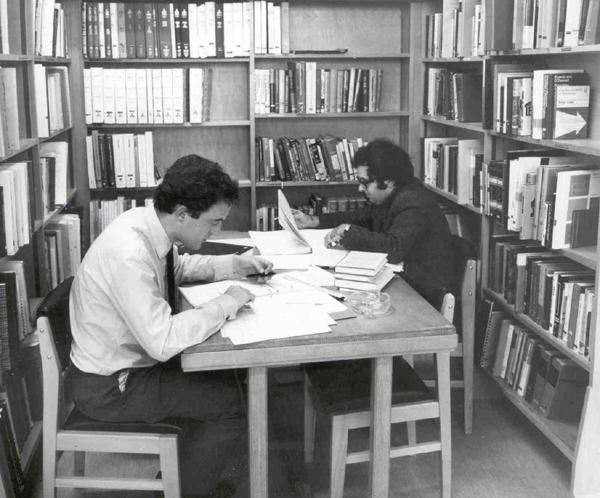
Atlas was a very fast machine for its day. The simplest mathematical or logical operations, such as addition, storing or comparison, took between 1.6 and 2.2 micro-seconds (µs) while multiplication took 5.9 µs. This meant, for example, that a set of 5000 numbers could be sorted into numerical order in 1 second, or a set of 100 linear equations in 100 unknowns could be solved in about 10 seconds. The machine at Chilton was in fact a great deal more powerful than anything to which the British university community had access in 1964, and compared very favourably with what was available to the great majority of American academic workers. Since then, of course, the international electronics industry has developed much faster components than were available when Atlas was designed and the whole technique of computer manufacture has changed. Now, machines with more than 20 times the basic computing speed of Atlas are in commercial production. But Atlas is now seen as a remarkable achievement a classic and pioneering machine, and will be remembered with affection by all who worked with it.
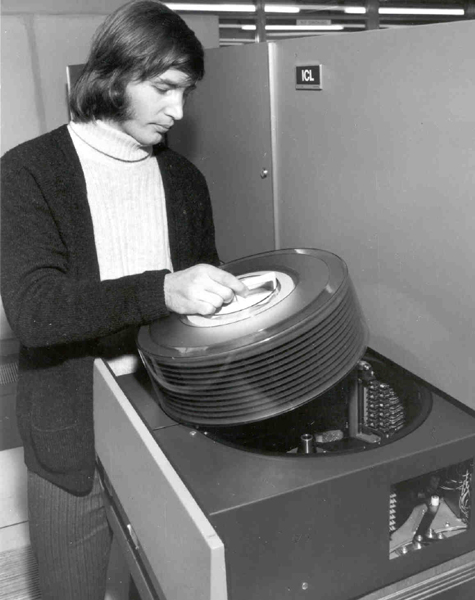
The Main Hardware at the Laboratory now is:
(i) The ICL 1906A computer which was installed in July/August 1971. The main items in the system are a 1024K character core store, each character containing 6 binary digits (bits), cycle time 650 nanoseconds (ns), paged; (NB: K here and elsewhere means 210=1024) 2 magnetic drums, each of approximately 2M characters with a transfer rate of 1.4M characters per second; a 9-spindle EDS-30 exchangeable magnetic disc file, each disc cartridge holding 30.8M characters with an instantaneous transfer rate of 416 Kilocharacters per second for each drive; a 5-spindle EDS-60 exchangeable disc file, each cartridge holding approximately 60M characters, with an instantaneous transfer rate of 416 Kilocharacters per second for each drive (added May 1973); magnetic tape equipment comprising 8 drives for 9 track tape, phase-encoded recording at 1600 bits per inch with a transfer rate of 160K characters per second and 4 drives for 7 track tape, NRZ recording at 200, 556 or 800 bits per inch with transfer rates 15K, 42K or 60K characters per second respectively; input equipment comprising 2 card readers (1600 cards per minute), and 2 paper tape readers (1000 characters per second) ; output equipment comprising 2 line printers (120 characters per line, 1350 lines per minute), 1 card punch (100 cards per minute) and 1 paper tape punch (110 characters per second); communications equipment, ICL 7903, comprising a communications processor, with ancillary equipment capable of controlling up to about 32 keyboard and 10 card reader/line printer terminals.
M here and elsewhere means 1 million and all magnetic tape is ½inch industry compatible.
The machine is operated with the ICL George 4 operating system, which is the standard George 3 system for the larger members of the 1900 range adapted to take advantage of the paging hardware. The system includes an elaborate and comprehensive filing system, allows the programmer to disregard the physical distribution of the store between core and drums or discs and provides a multi-access system (MOP-Multiple On-line Processing). The basic processing speed of the 1906A is about a million operations a second, which is about 2½-3 times that for Atlas. As with all computers the speed with which a real program is executed is very sensitive to the nature of the program and particularly to the demands made on the storage system. On the whole, complete programs are executed by the 1906A at between 2 and 3 times the rate for Atlas.
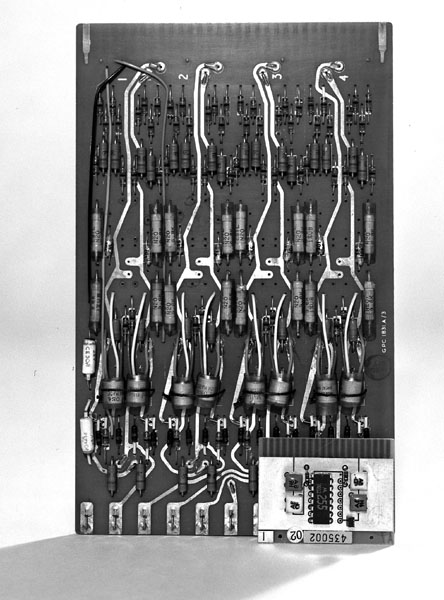
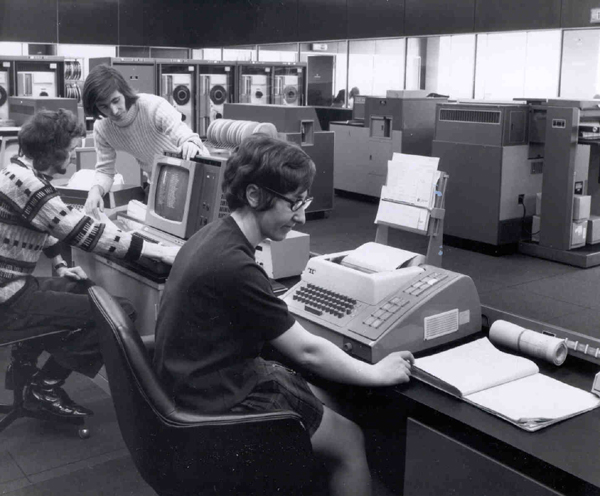
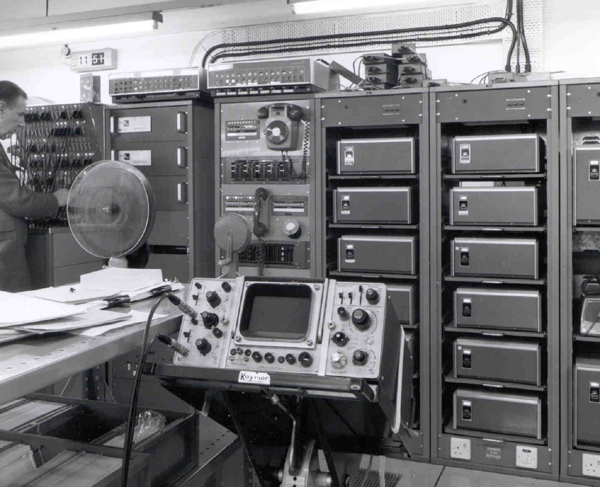
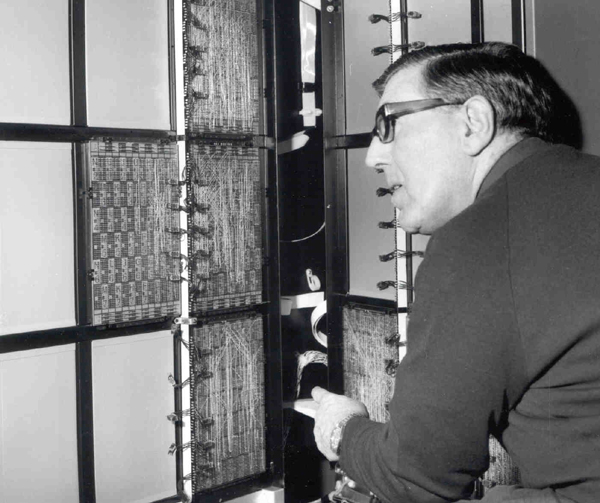
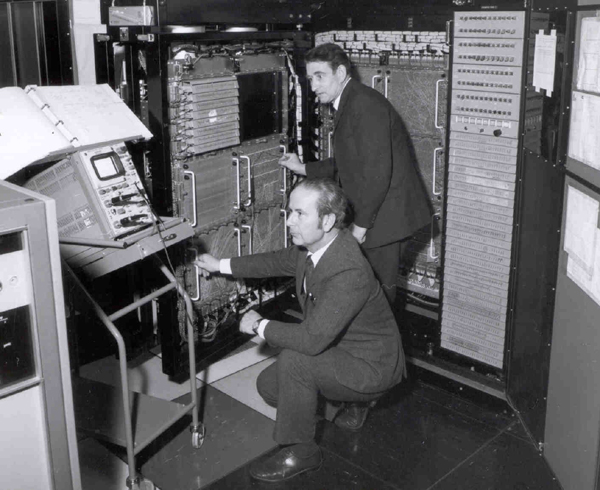
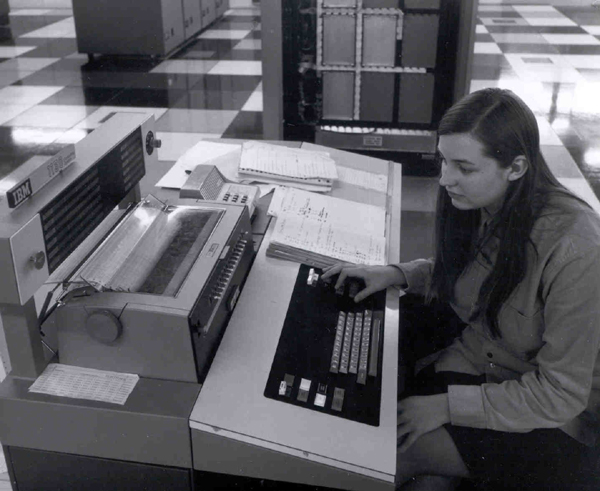
(ii) A share in the IBM 370/195 installed in the neighbouring Rutherford High Energy Laboratory in December 1971. To act as the input-output station for the Atlas Laboratory work, an IBM 1130 machine was installed in the Atlas Laboratory, with a fast (40.8 Kilobaud) link to the 370/195. At the time of writing the share amounts to 20 hours a week of central processor time.
The 370/195 is the most powerful member of the IBM 360-370 series. The main items in the Rutherford Laboratory system are a core store of 2M bytes (8-bit characters), cycle time 756 ns; a fast buffer store: 32K bytes, cycle time 54 ns; an 8-spindle IBM 2314 exchangeable magnetic disc file, each cartridge holding 29M bytes, with a transfer rate of 312 Kilobytes per second for each drive and an average access time 75 ms; 16 IBM 3330 exchangeable magnetic disc drives, each cartridge holding 100M bytes, with a transfer rate of 806 Kilobytes per second for each drive and an average access time of 30 ms; an IBM 2305 fixed magnetic disc file, capacity 11.2M bytes, with a transfer rate of 1.5 million bytes per second and an average access time 5 ms; magnetic tape equipment comprising 8 IBM 3420-7 drives for 9-track tape, phase-encoded, recording at 1600 bits per inch with a transfer rate of 320K bytes per second, 2 IBM 3420-7 drives as above, but allowing recording at either 800 NRZI or 1600 phase encoded bits per inch and 2 IBM 3420-5 drives for 7 -track tape, NRZ recording at 556 or 800 bits per inch, with transfer rates of 69.5K or 100K bytes per second; 2 input card readers, 1000 cards per minute; 4 1ine printers, 132 characters per line, 1100 lines per minute; card punch, 300 cards per minute.
(NB: The Rutherford Laboratory machine has many links to measurement and control equipment associated with the high energy physics work of the laboratory).
The IBM 1130 in the Atlas Laboratory has 16K bytes of core store (3.5 µsec access time), a disc store of capacity 1 million bytes, a card reader (1000 cards per minute) and a line printer (1100 lines per minute). The 40.8 Kilobaud link to the main computer allows the card reader and line printer to be run at full speed simultaneously.
The 370/195 is run under the IBM OS/360 operating system, with the MVT (variable-sized tasks) feature. Input/ output is under control of the HASP sub-system. The Rutherford Laboratory have developed a multi-access system, ELECTRIC, and a graphical display system MUGWUMP. The 370/195 is very fast. Again, the speed of execution of individual programs varies with the nature of the program, particularly with the extent to which the fast buffer store can be used. Most programs seem to run at between 20 and 30 times Atlas speed.
(iii) A Computer Graphics System built up over the years 1967-1972. It now consists of a DEC PDP-15 computer with 64K words (each 16 bits) of core store (800 ns cycle time), disc storage for 1 M words, 3 DEC tape units, 2 magnetic tape drives for 7 track NRZ recording at 200, 556 or 800 bits per inch and paper tape and teletype input/output; a DEC VT-15 17-inch programmable display with keyboard, light-pen and ultrasonic writing tablet; a Stromberg-DatagraphiX microfilm recorder, driven from 7 track magnetic tape and recording (point-plots, graphs, diagrams, contours, texts) on 16 or 35 mm cine film or on hardcopy paper and a D-MAC Type PF 10,000 Mark 1 A pencil follower, with 100 x 100 cm table for digitising any form of curve, diagram, map or character, the co-ordinates being punched on paper tape or read direct into the PDP-15.
The equipment is linked so that, for example, material intended for recording on the SD-4020 can be displayed on the VT-15. There is a British Standards Interface, with a nominal speed of 1 M bits per second, linking the PDP-15 and the 1906A. A VCS3 synthesiser with interface to the PDP-15 enables synthetic sound-tracks to be added to cine films produced by the system.
(iv) The Sigma-2 System which was the front-end of the Atlas multi-access system consists of an RXDS Sigma-2 computer, with 32K words (18 bits) core store (cycle time 1 µsec); disc storage for 3 million bytes; a card reader, a line printer and a Data Products 5045 disc file, capacity 100M characters (6 bits) with 2 independent read/write mechanisms and controls. The system can communicate simultaneously with up to 8 keyboard-type terminals. It retains all the file-processing and editing features of the Atlas multi-access system and the Sigma-2 is a computer in its own right. It is now available as a small-scale computing system and for experimental work such as the simulation of communication systems.
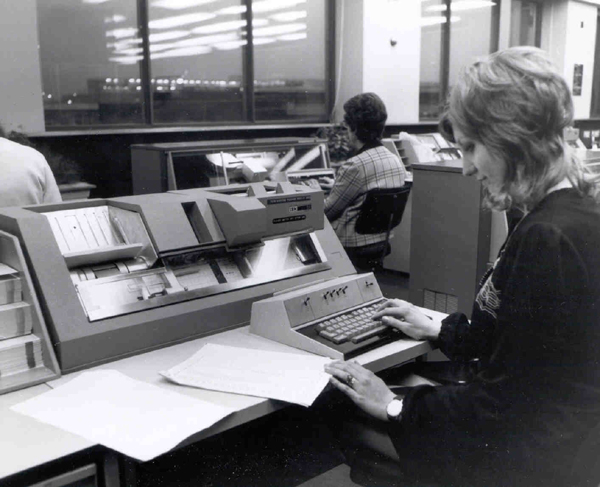
(v) The Microdensitometer System which contains a special piece of equipment - an Optronics Photoscan controlled by an Alpha 16 mini computer - is used for scanning and measuring crystallographer's films produced by X-ray and neutron diffractometers. The digital information so produced is the starting point for crystallographic analyses.
In addition there are the usual card and paper tape-handling machines, keyboard and visual-display terminals and other minor equipment which one expects to find in a computer laboratory. The major question of a new large computer to replace Atlas is being discussed at the time of writing.
The operating systems for the various machines and the compilers for the main high-level languages are the responsibilities of the machines' manufacturers. The full range of manufacturers' compilers are available (with some reservations because of possible charges for certain special IBM compilers), but the great bulk of the work processed on the 1906A is in Fortran - ICL XFIH and XFEH, and Algol - ICL XALH; on the 370/195 it is in Fortran - IBM H-Level; and on the PDP-15 Fortran also. On the 1906A compilers are available for Algol 68R from the Radar Research Establishment, Malvern and for POP-2 from the Department of Machine Intelligence, University of Edinburgh. The ICL assembly languages PLAN and PLASYD also are available on the 1906A.
Libraries are available of standard programs and routines provided by the manufacturers (e.g. for matrix processing, quadrature, computation of standard functions, sorting) and the NAG library of numerical-analysis procedures which is being developed by the Nottingham Algorithm Group and taken up generally by the universities.
The Laboratory has designed and produced comprehensive software to simplify the use of the SD-4020; two systems, one in Algol (called GROATS-Graphical Output on Atlas) and one in Fortran, were written originally for Atlas and are now available on the 1906A; the Fortran system is also available on the 370/195. A more extensive and unified system is now being developed in which everything can be controlled by the PDP-15, and which will go much further than the earlier systems towards simplifying the production of cine films by computer. The Laboratory will acquire, commission or develop software packages for which there is a clear and general need, and will undertake to maintain these. The principle ones in operation at the time of writing are:
in Quantum Chemistry: a number of systems for computing molecular wave functions and derived quantities, namely ATMOL, IBMOL, ALCHEMY, POLYATOM.
in X-Ray Crystallography: A very comprehensive unified set of programs called the X-Ray System, for the determination of crystal structures from X-ray or neutron diffraction measurements.
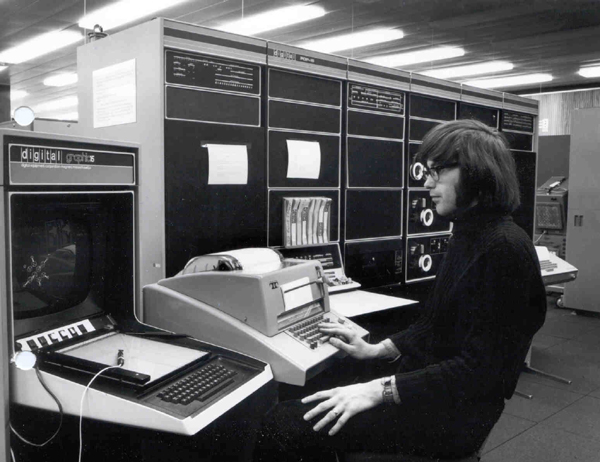
in Statistics: The ASCOP system, an integrated system for data management and statistical analysis.
in Survey Analysis: MVSL, a program for the organisation, tabulation, grouping and statistical processing of information collected in sample surveys.
in Text-processing: COCOA - a program for producing word-counts, frequencies and concordances from text input. It can be used to process texts in non-Latin alphabets (e.g. Arabic) input in transliterated form and to produce output on the SD-4020 in the original alphabet.
and in Time-series processing: A general program BOMM had been much used on Atlas to study the structure of time-series, using mainly auto-correlation and power-function methods. It is being re-written, with extensions and improved mathematical techniques, for the 1906A.
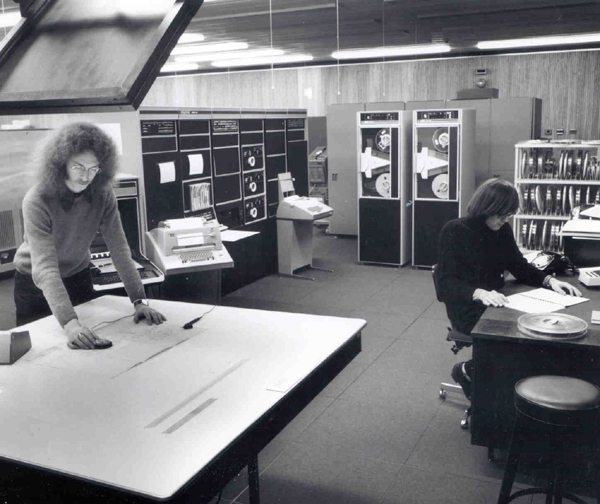
This numbers about 150 people. It has its own Administration Group, but relies on the Rutherford Laboratory Administration Division for such matters as salaries and wages, payment of accounts and personnel. The majority of the staff are concerned with the scientific and technical work. Under the Director, Dr J. Howlett, CBE, who is responsible to the Chairman of the Science Research Council for all matters concerning the Laboratory, there is:
The User Services Group: J. E. Hailstone: responsible for the provision and control of the computing service, and made up of two Branches: Operations Branch, D. G. House: responsible for operating and provisioning all the equipment and for having it maintained. Resource Management Branch, E. B. Fossey: responsible for allocation of time and other resources to users, control, liaison with users and with the SRC London Office.
Basic Software Group, F. R. A. Hopgood: responsible for all software which is not special to a particular problem or field of science. Thus, for example, for anything concerning operating systems, compilers, communications, computer graphics.
Applications Software Group, Miss B. Stokoe: responsible for software concerned with particular problems and fields of science. Thus, for example, on the production or acquisition of programs. This Group, as a special task, has produced the data-processing programs for the SRC's space-research projects.
Mr. Hopgood also holds a part-time chair in Computer Science at Brunel University.
The Laboratory has also a small number of posts available for independent research workers, who can use any of the services available to users and are not involved in the work of these Groups. These appointments are made for fixed terms, normally three years, and can be associated with academic Fellowships. Several have been associated with Fellowships at Colleges of Oxford and Cambridge.
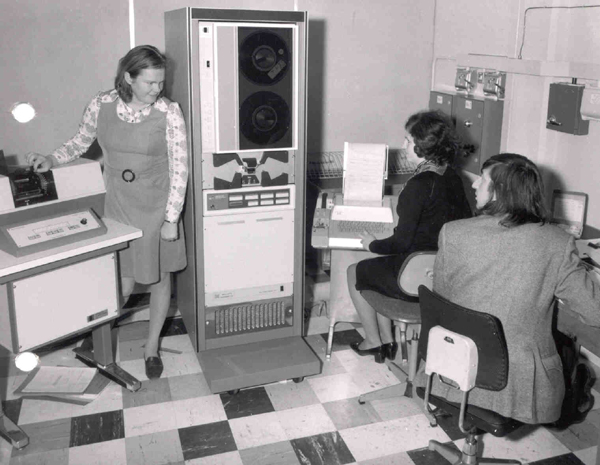
were planned from the outset to meet the special needs of a computing service, of which most of the users would be spread over the country. The first phase of the building was started in the autumn of 1962 and finished in the spring of 1964. It provided fully air-conditioned accommodation for the Atlas computer and all ancillary equipment and services, and office accommodation for the staff; and because there would always be users of the services needing to work in the Laboratory for short or long periods, accommodation for them was provided in the form of a suite of twelve small rooms (always known as the Cells) and a reasonably large communal work room, always known as the Think Room. This provision for visitors has proved a blessing, and has added immeasurably to the ease and convenience with which visiting users can work.
The building has been extended twice, and a third extension will be made during 1973-74. The first was to add a new office wing, a library and a new conference room, and was completed in 1967. The second was a new machine block to house the 1906A, built contiguous to and connecting with the original Atlas machine block; this was completed in the early summer of 1971. The third extension will provide more offices and a new conference room to replace the present one (which will be converted into offices).
The total floor area of the air-conditioned machine blocks is 16,593 sq ft (1,545 sq m) ; when the third extension has been built the total area of the rest of the building will be 30,219 sq ft (2,785 sq m). The whole building has been cabled for data communications so that every office can have a keyboard or visual-display terminal connected to a communications centre located in the machine area. Plans of the buildings appear inside the front cover.
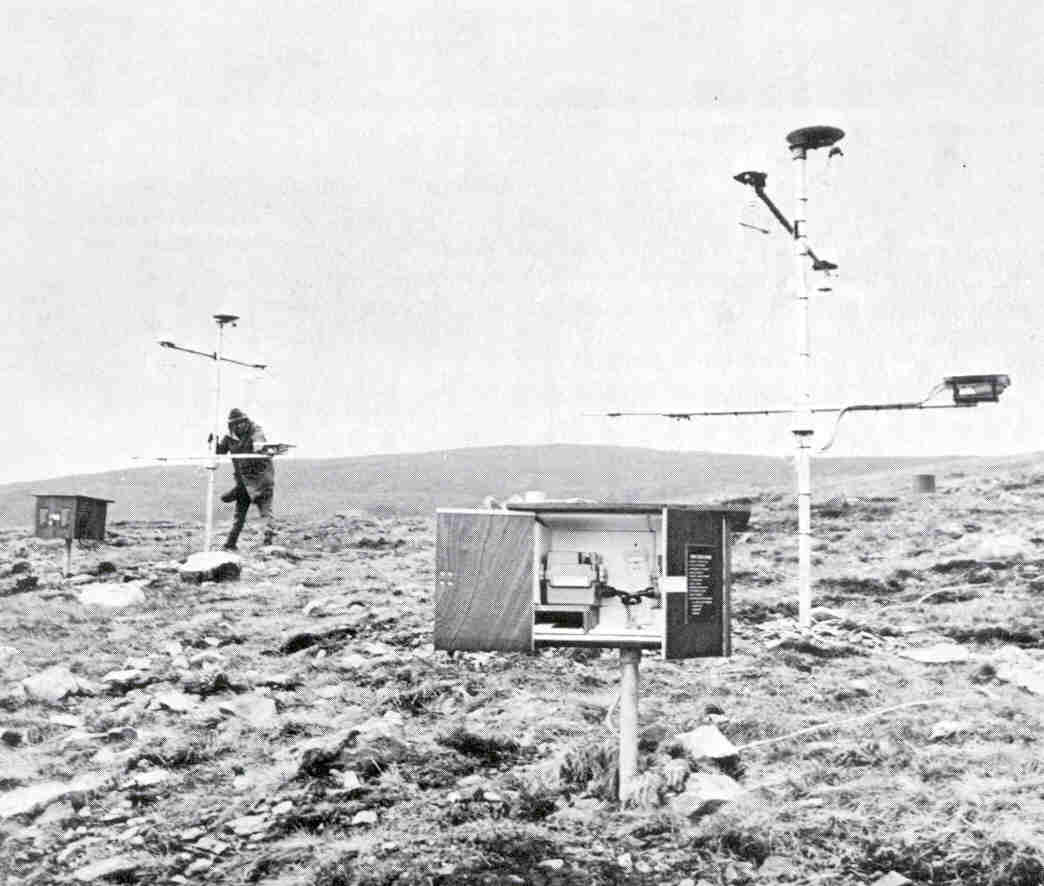
of a large proportion of the computer time are from the four disciplines-chemistry, physics (non-nuclear), mathematics and engineering. About 80% of the time on Atlas was taken up by work for university users (all 54 universities have used or are using the Laboratory's facilities), 15% by Government, including other Research Councils, and 5% by the Laboratory for its own research and development work. Thus the university use dominated the scene and whilst it is likely that the Research Councils will take more time in the future, this broad pattern of use is virtually certain to continue. All services to university users are free, Government users are charged at cost. A small amount of work has been done for private industry, for which special terms have been negotiated.
There is in every British university an Atlas Laboratory Representative, in every case either the head of the university's own computer centre or his nominee. He (or she) receives all the information put out by the Laboratory and is the agreed channel of communication between the Laboratory and the university. Anyone contemplating using the Laboratory is welcome to make an informal approach - the best first step is to write to the Head of the User Services Group; a subsequent application will have to be made formally through the university representative. The Laboratory can at its own discretion give users small amounts of time on any of its machines for small-scale or exploratory projects and, together with internal research work, about 20% of the total amount of time available may be allocated in this way. The greater part of the Laboratory's resources are intended for users with large-scale projects, whose work requires that they must be assured of a regular and possibly large allowance of machine time over extended periods. Applications of this kind are submitted to the relevant specialist committees of the Science Research Council so that the scientific standard of the work can be assessed just as it would be in the case of an application for a financial grant. If the committee supports the application, the Laboratory will then guarantee to the scientist the services which he has been awarded and he can plan his work in the confidence of getting the computational support which he needs. The object of this procedure is to enable research workers to plan and to carry out projects of high scientific quality which depend upon the assurance of continued access to powerful computational services.
The Laboratory is indebted for pictures to the UKAEA, the RHEL and to B.J. Harris (Oxford) Ltd
The Laboratory is on the Berkshire Downs, adjacent to the SRC's high energy physics laboratory - the Rutherford Laboratory - and to the Atomic Energy Research Establishment, Harwell. It is on the west side of the A34 (Preston to Winchester) trunk road, 14 miles south of Oxford, map OS 158 (1-inch) reference 480 :865. The M4 (London to South Wales) motorway connects with the A34 at Chieveley (Junction 13), nine miles south of the Laboratory. London Airport is 57 miles away by this route, 45 miles cross-country. The nearest railway station is Didcot (Western Region), 5 miles to the east; and the City of Oxford No. 112 (Oxford-Newbury) buses pass the site.
The postal address is:
Atlas Computer Laboratory Science Research Council Chilton, Didcot, Berkshire Post Code: OX11 OOY Telephone: Abingdon 1991 (Extension 6296 for the Reception Desk) Telex: 83303
The quicker route from London or London Airport (Heathrow) to Atlas is via M4 to Junction 13 and then by A34 to the Laboratory.
The shorter route is via M4 to Junction 9. then via A423 through Henley, Wallingford, Didcot Harwell to the Laboratory.
At Didcot British Rail main line services are available to London, Oxford and Bristol.
